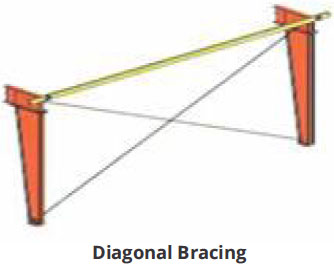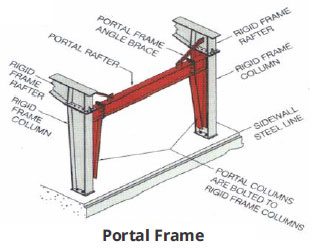Ph: +(91)-(11)-43764376
M: +(91)-9871419703 / 8527795552
E-mail: contact@ambebuildings.com
Follow Us:
Frame Types
TYPE OF FRAME :
ABSPL, caters to the customized requirements of its clients viz. building type, space efficiency, building utility and designing flexibility. The
buildings are built using various frame options.
DIAGONAL BRACING SYSTEM This member is design to ensure the stability of the building against forces in the longitudinal direction due to wind, crane, earthquake etc. Bracing systems all horizontal loads on a structure must eventually be carried to column based and then to the building substructure (foundation and ground slabs). Horizontal loads result from the action of wind forces seismic (earth quake) forces and overhead cranes on the building structure. Diagonal Bracing is used in the roofs and walls of buildings to transfer wind forces to the building substructure. Standard bracing system commonly used is galvanized cable strands, solid smooth rods, flat bars, ms pipe or angles. Diagonal Angle Bracing is used to transfer longitudinal horizontal loads of traveling overhead cranes to substructure when the capacity of these cranes exceeds 20 MT. They are also used as wall bracing in very high buildings. |
 |
PORTAL FRAME SYSTEM
 |
Portal Frames are used in exterior sidewalls or between the
interior columns of Multi Span / Multi Gable buildings
when diagonal bracing is not allowed because of a
requirement for clear unobstructed space. Portal frames are
made from built-up columns and beams. Their columns
flanges are stitch bolted to the webs of the rigid frame
columns and extend down to 150 mm above F.F.L. care
must be taken to ensure that the bottom of the portal frame
beam is higher than the required unobstructed height. |

